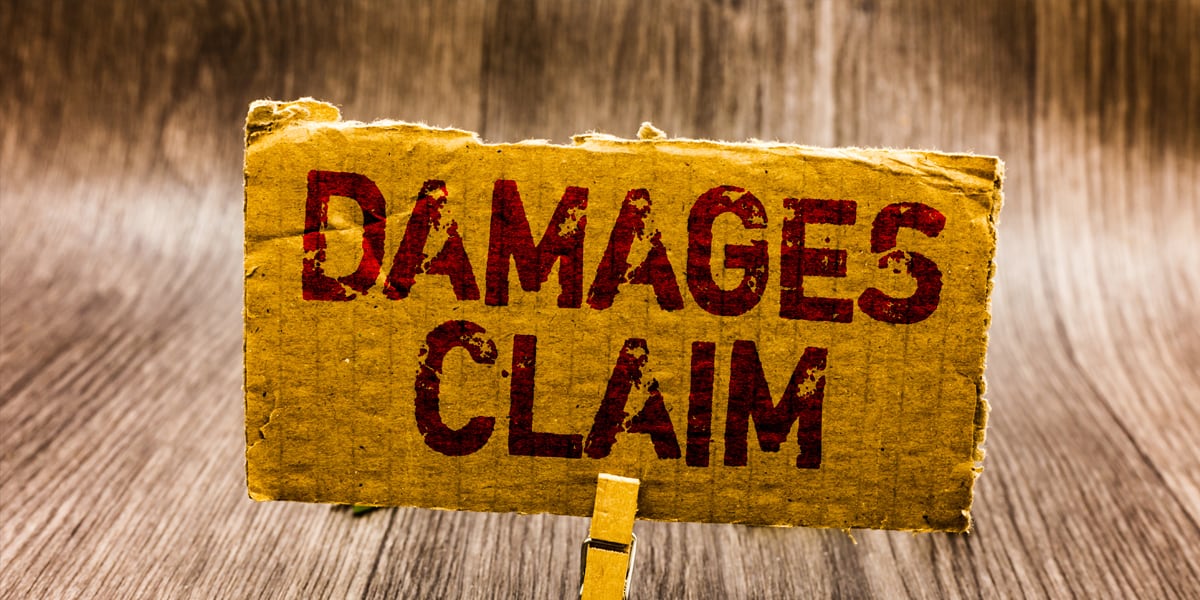Understanding the Importance of Properly Dealing with Insurance Companies
Dealing with insurance companies can often be a daunting and complex process, especially when it comes to filing claims for damages such as roof damages caused by a hail storm. It is crucial to have a clear understanding of how to navigate through the insurance claim process in order to ensure that you receive fair and timely compensation for your losses.
Insurance companies play a vital role in providing financial protection and coverage for various risks. However, it is important to remember that they are profit-driven entities and may sometimes prioritize their own interests over yours. This is why knowing how to effectively communicate and negotiate with insurance companies is essential.
When it comes to roof damages caused by a hail storm, it is crucial to gather evidence and document the extent of the damage thoroughly. This includes taking photographs, gathering repair estimates from reputable contractors, and keeping detailed records of all communication with your insurance company.
Understanding the intricacies of your insurance policy can also greatly benefit you during the claims process. Familiarize yourself with the terms, coverage limits, deductibles, and any exclusions that may apply specifically to roof damages caused by natural disasters like hail storms.
By being proactive in your approach and following proper procedures when dealing with insurance companies, you can increase your chances of receiving fair compensation for your roof damages. In this post, we will explore various aspects of dealing with insurance companies in relation to roof damages caused by hail storms, including tips on filing claims effectively and navigating through potential challenges that may arise along the way.
Assessing the Roof Damages: Steps to Take After a Hail Storm
After a hail storm, it is important to assess the damages to your roof promptly. This will help you determine the extent of the damage and take necessary steps for repairs or insurance claims. Here are some steps to take when assessing roof damages after a hail storm:
- Safety first: Before inspecting your roof, ensure your safety by waiting for any dangerous weather conditions to pass and wearing appropriate protective gear such as sturdy shoes and a hard hat.
- Visual inspection: Carefully examine your roof from ground level to look for any obvious signs of damage, such as missing or cracked shingles, dents on metal roofs, or displaced tiles.
- Document the damages: It is crucial to document the damages properly for insurance purposes. Take photographs or videos of all visible damages from various angles. This will serve as evidence during the claims process.
- Inspect gutters and downspouts: Check if there are any dents, cracks, or blockages in your gutters and downspouts caused by hailstones. These can indicate potential roof damage.
- Interior inspection: Don’t forget to inspect the interior of your home as well. Look for water stains on ceilings or walls that could indicate leaks caused by damaged roofing materials.
- Professional assessment: If you are unsure about the extent of the damage or if it is safe for you to climb onto your roof, it is recommended to hire a professional roofing contractor for a thorough inspection.
Remember that timely action is essential when dealing with roof damages after a hail storm. By following these steps and documenting all damages properly, you can ensure an accurate assessment and facilitate necessary repairs or insurance claims effectively.
Contacting Your Insurance Company: Initiating the Claim Process
When it comes to filing an insurance claim for roof damages, it is important to know the proper steps to initiate the process. Contacting your insurance agent or company is the first and most crucial step in this process.
To begin, gather all necessary information and documentation related to the damages. This may include photographs of the roof damage, any relevant invoices or receipts for repairs, and a detailed description of what occurred. Having these materials ready will help streamline the claims process and ensure that you have all necessary information at hand when speaking with your insurance company.
Once you have gathered all necessary documents, reach out to your insurance agent or company as soon as possible. Be prepared to provide them with a clear and concise account of what happened, including any relevant dates and times. They will likely ask for specific details about the damage, so it is important to be as thorough and accurate as possible.
During this initial contact, your insurance agent will guide you through the next steps in filing your claim. They may provide you with specific instructions on how to submit your documentation or schedule an appointment for an adjuster to assess the damages in person.
Remember that communication is key throughout this process. Stay in close contact with your insurance company and promptly respond to any requests for additional information or documentation they may have. By following these steps and providing all necessary information upfront, you can help ensure a smoother claims process for filing an insurance claim for roof damages.
Negotiating with the Insurance Adjuster: Tips for Maximizing Your Claim Settlement
When it comes to negotiating with insurance adjusters, it’s important to be well-prepared and knowledgeable about the process. This section will provide you with valuable tips on how to navigate these negotiations effectively and maximize your claim settlement.
One crucial aspect of negotiating with an insurance adjuster is presenting evidence of roof damages. This includes documenting the extent of the damage through photographs, videos, and detailed descriptions. By providing concrete evidence, you can strengthen your case and increase your chances of receiving a fair settlement.
Understanding your insurance policy coverage and limitations is another key factor in successful negotiations. Familiarize yourself with the terms and conditions outlined in your policy, paying close attention to any exclusions or limitations that may affect your claim. This knowledge will empower you during discussions with the adjuster, allowing you to assertively advocate for proper compensation.
Additionally, being aware of common negotiation tactics used by insurance adjusters can help you navigate these conversations more effectively. Adjusters may try to downplay damages or offer low settlements initially. By staying informed about these tactics, you can confidently counter their offers and negotiate for a more favorable outcome. If negotiating is not your strong suit or if you feel uneasy about it, involving your roofer in the process can be a helpful solution. They have experience in dealing with negotiations and can provide guidance and support to ensure that you get a fair deal.
By following these tips and arming yourself with knowledge, you can approach negotiations with insurance adjusters in a strategic manner that maximizes your claim settlement potential.
Working with Contractors and Obtaining Repair Estimates
When it comes to finding reputable roofing contractors and obtaining repair estimates, there are a few key steps to consider. First and foremost, it is crucial to do thorough research to ensure that the contractors you are considering are reputable and reliable.
One way to find reputable roofing contractors is by asking for recommendations from friends, family, or neighbors who have recently had similar repairs done. Additionally, online review platforms and local business directories can provide valuable insights into the experiences of past customers.
Once you have narrowed down your list of potential contractors, it is important to obtain multiple repair estimates. This allows you to compare pricing, scope of work, and timelines. By obtaining multiple estimates, you can ensure that you are getting a fair price for the repairs needed.
Coordinating repairs with insurance company requirements is another important aspect of working with contractors. It is essential to communicate with your insurance company throughout the process and understand any specific requirements they may have. This could include providing detailed documentation or obtaining approval for certain repair methods.
By following these steps – finding reputable contractors, obtaining multiple estimates, and coordinating repairs with insurance company requirements – you can navigate the process more effectively and ensure that your roofing repairs are carried out smoothly and efficiently.
Maintaining Clear Communication and Documentation Throughout the Process
Maintaining clear communication and documentation throughout the process is crucial when dealing with insurance claims and roof repairs. By keeping records of communication with the insurance company and adjusters, you can ensure that all important information is properly documented.
When communicating with the insurance company or adjusters, it is recommended to keep a record of all conversations, whether they are through phone calls, emails, or letters. This will serve as a reference in case any disputes arise during the claims process.
In addition to communication records, it is equally important to document all expenses related to roof repairs and the claims process. This includes invoices from contractors or repair services, receipts for materials purchased, and any other relevant financial documentation. By doing so, you can provide evidence of your expenses and support your claim for reimbursement.
Having clear communication records and well-documented expenses not only helps in ensuring transparency but also strengthens your position when dealing with insurance companies. It provides a solid foundation for any negotiations or disputes that may arise during the claims process.
Appealing a Denied Claim: Steps to Take if Your Claim is Rejected by the Insurance Company
If your insurance claim has been denied, it can be frustrating and overwhelming. However, it’s important to remember that you have options and steps you can take to appeal the decision. In this section, we will discuss the necessary steps to take if your claim is rejected by the insurance company.
The first step in appealing a denied insurance claim is to carefully review the denial letter provided by the insurance company. This letter should outline the specific reasons why your claim was denied. Understanding these reasons is crucial as it will help you determine how to proceed with your appeal.
Once you have reviewed the denial letter, gather any supporting documentation that may strengthen your case. This could include medical records, bills, receipts, or any other relevant evidence that supports your claim. It’s essential to provide as much evidence as possible to demonstrate why your claim should be approved.
Next, familiarize yourself with your insurance policy and its terms and conditions. Understanding what is covered under your policy will help you identify any discrepancies or misunderstandings that may have led to the denial of your claim.
After gathering all necessary documentation and reviewing your policy, it may be beneficial to seek professional assistance in appealing a denied claim decision. Insurance claims can be complex, and having an experienced attorney or public adjuster on your side can greatly increase your chances of success.
When filing an appeal for a denied insurance claim, make sure to follow all instructions provided by the insurance company regarding their appeals process. This typically involves submitting a formal written appeal along with any supporting documentation within a specified timeframe.
Lastly, remain persistent throughout the appeals process. It may take time and multiple attempts before reaching a resolution. Keep track of all communication with the insurance company and follow up regularly on the status of your appeal.
Remember that appealing a denied insurance claim requires patience and perseverance. By following these steps and seeking professional assistance if necessary, you can increase your chances of overturning a denial and obtaining the coverage you deserve.
Navigating the claims process after a hail storm can be a daunting task, but it is essential to ensure fair compensation for roof damages. By understanding the necessary steps and being prepared, homeowners can increase their chances of a successful claim.
First and foremost, documenting the damage is crucial. Take clear photos or videos of all affected areas, including close-ups of any visible dents or cracks. This evidence will serve as proof when filing the claim with your insurance company.
Next, it is important to review your insurance policy thoroughly. Familiarize yourself with the coverage limits, deductibles, and any specific requirements for filing a claim related to hail damage. Being knowledgeable about your policy will help you navigate the process more effectively.
When filing the claim, make sure to provide all necessary information accurately and in a timely manner. Include details such as the date and time of the hail storm, a description of damages observed, and any relevant documentation or evidence gathered.
Throughout the claims process, maintain open communication with your insurance company. Follow up on your claim regularly to ensure that it progresses smoothly and address any concerns promptly.
In some cases, it may be beneficial to seek professional assistance from public adjusters or roofing contractors experienced in handling insurance claims. These experts can provide guidance and advocate on your behalf during negotiations with the insurance company.
Lastly, remember that patience is key when dealing with insurance claims. The process may take time due to inspections, evaluations, and negotiations. Stay organized by keeping records of all communication related to your claim for future reference.
By following these steps and being proactive throughout the claims process, homeowners can increase their chances of receiving fair compensation for roof damages caused by a hail storm.
Contents
- Understanding the Importance of Properly Dealing with Insurance Companies
- Assessing the Roof Damages: Steps to Take After a Hail Storm
- Contacting Your Insurance Company: Initiating the Claim Process
- Negotiating with the Insurance Adjuster: Tips for Maximizing Your Claim Settlement
- Working with Contractors and Obtaining Repair Estimates
- Maintaining Clear Communication and Documentation Throughout the Process
- Appealing a Denied Claim: Steps to Take if Your Claim is Rejected by the Insurance Company
- Navigating the Claims Process Successfully to Ensure Fair Compensation for Roof Damages After a Hail Storm



